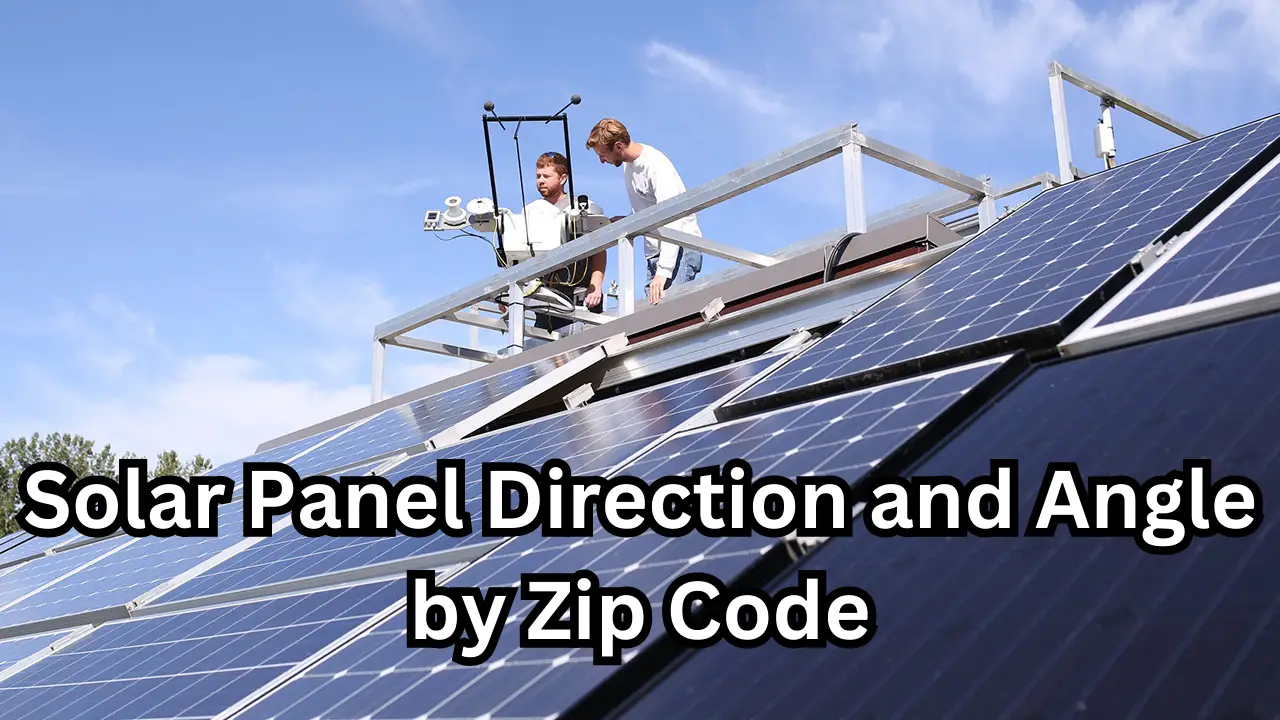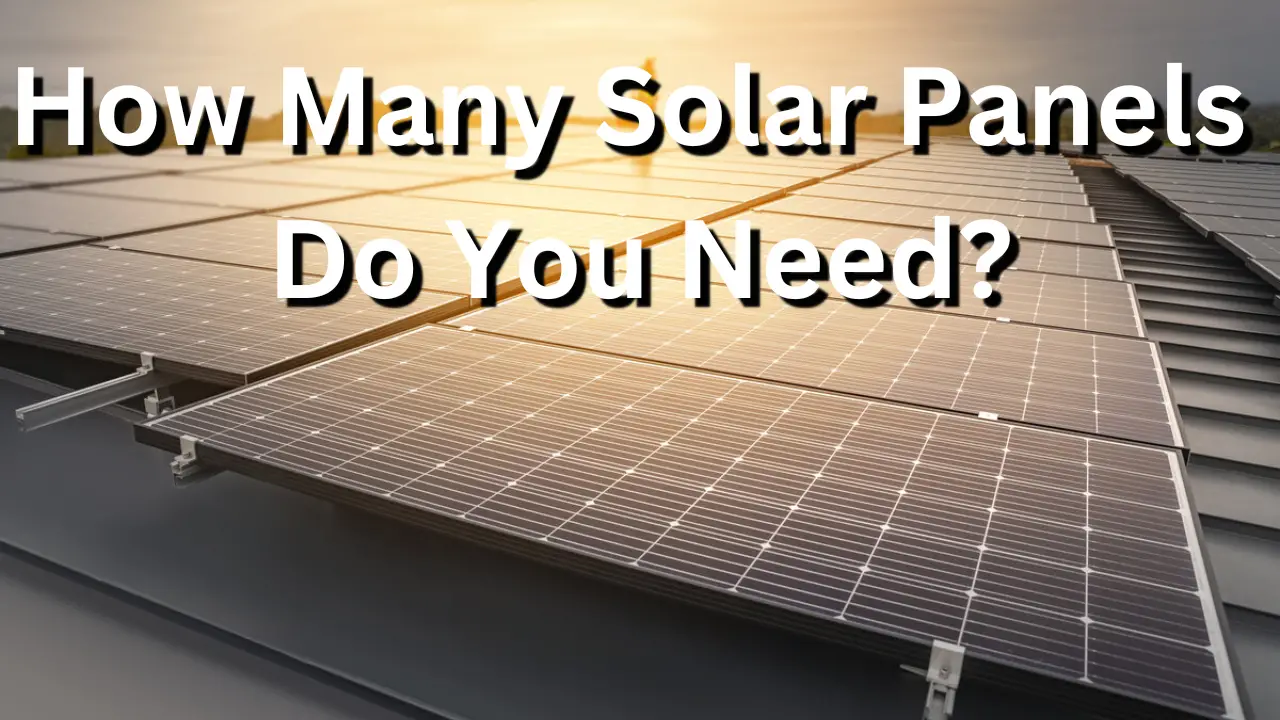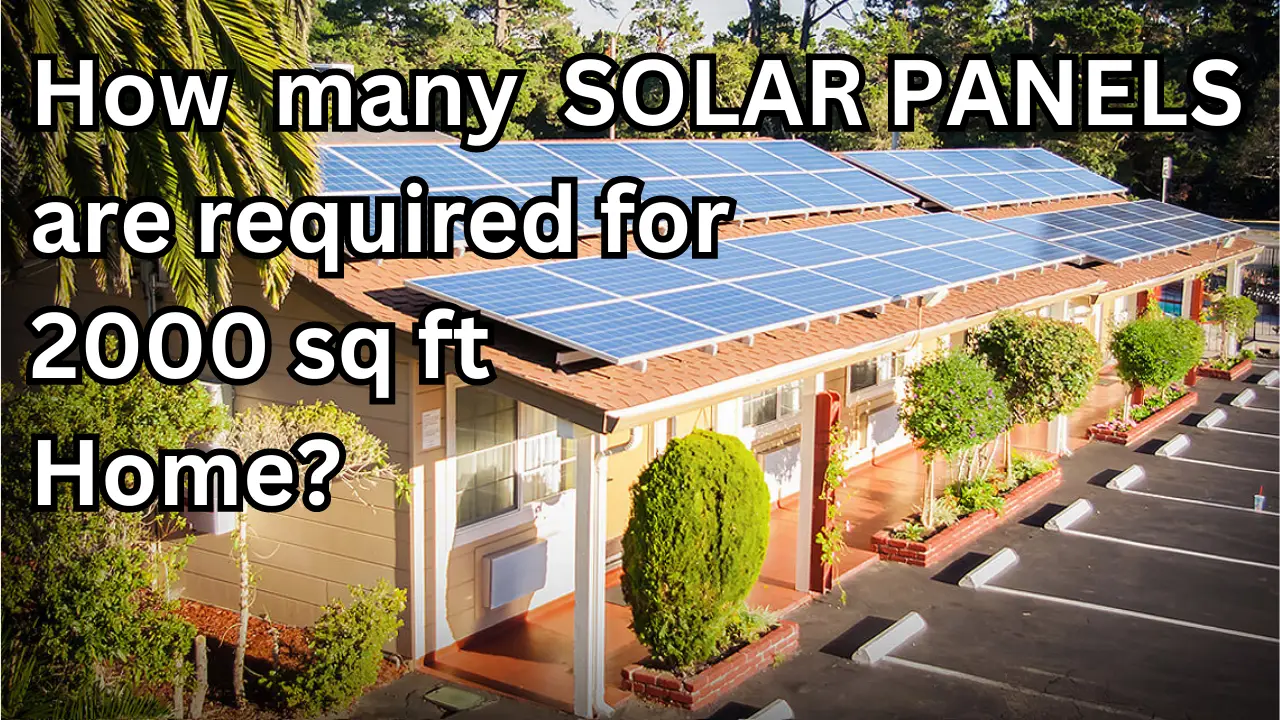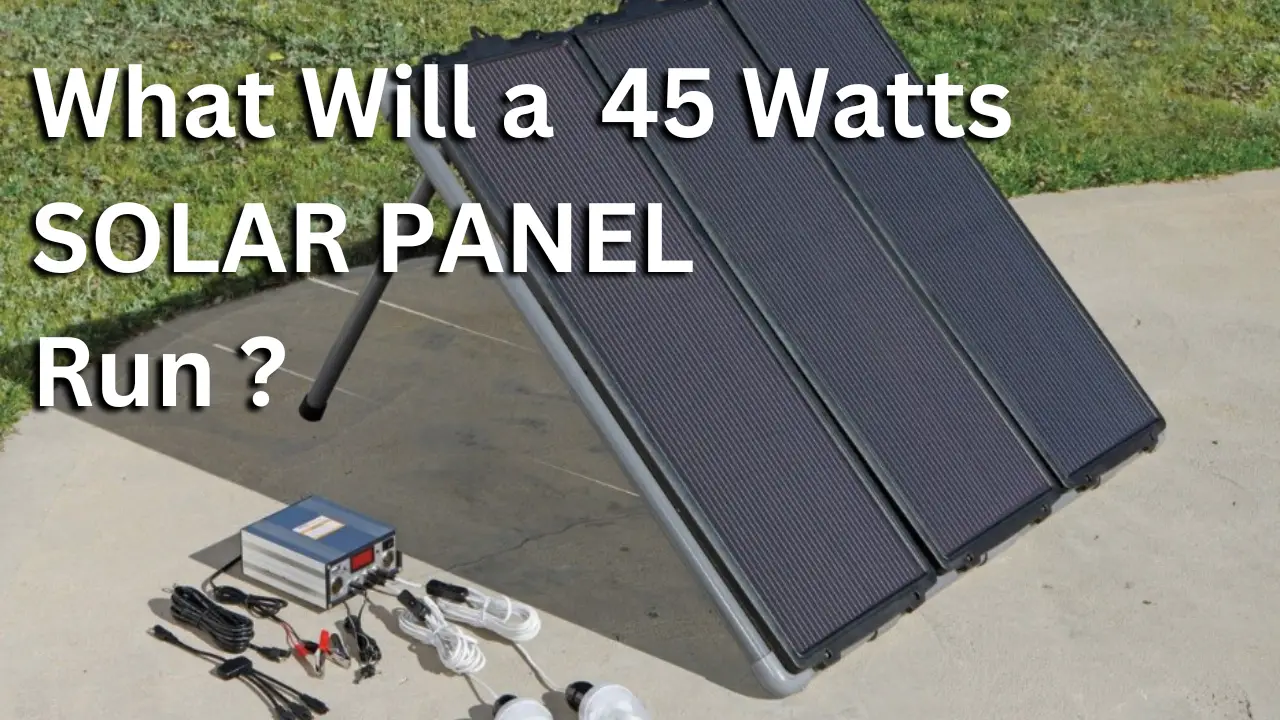This headline probably makes you a little perplexed because you’re wondering how the location of solar panels is related to a certain zip code. Did you know that choosing the right direction for your solar panels might help you produce more electricity? It is true.
You must determine the ideal solar panel angle for your area if you want your solar system to yield the highest possible output. With reference to your zip code, this article will assist you in determining that.
The most precise way to get the most sunshine bouncing off your brand-new, glittering solar panels is to calculate the azimuth angle, also known as the optimum angle for solar panels, in every state and zip code.
The Significance of Zip Code Solar Panel Direction
Numerous variables will affect the level of production your solar system is capable of producing. There are also things you can affect and things you cannot. For instance, you cannot control the weather or its movement, but you can manage the angle at which your solar panels will be lifted.
And it is something that can be extremely important in increasing the amount of energy the sun produces. Now, when installing solar panels for residential use on top of the roof, you must keep in mind that every place is unique and that something that is a fantastic solution in one state won’t be equally valued and successful in another. This is due to how variable the sun’s typical position is from place to place.
According to the experts on solar panels, you can identify a suitable angle for your solar building based on your zip code. But first, let’s clarify why it’s crucial for solar panels to be positioned at a specific angle, how to calculate it, and what you’ll get out of it.
The Direction of a solar panel
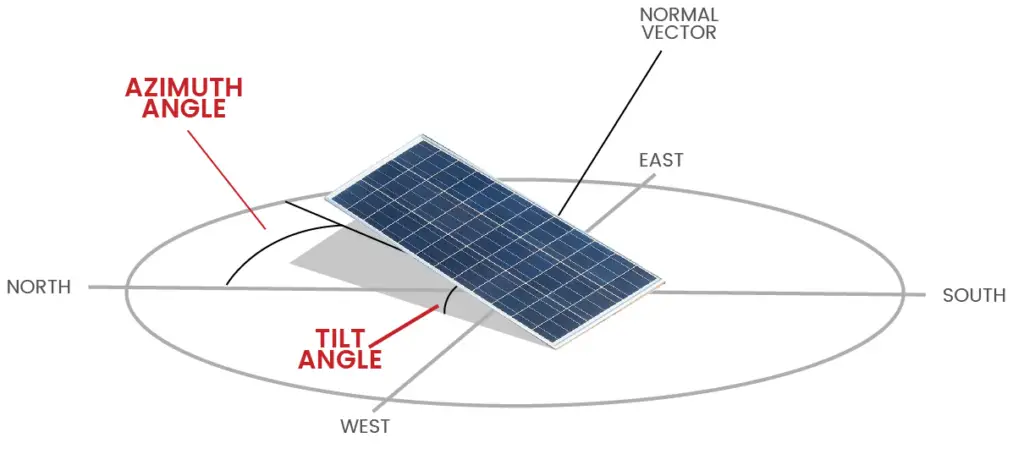
One of the key elements affecting how much sunlight your solar panels receive during the day is the direction your roof faces; instead of lining up with the Earth’s magnetic poles, true south, and true north face the axis of the planet. The optimal direction for solar panels is south for individuals living north of the equator, while southern hemisphere residences would place solar panels on roofs with a northern-facing orientation.
The optimal orientation for solar panels and arrays can be obtained by arranging solar panels in accordance with true south and the azimuth angle—the angle of the sun with respect to true north and true south.
The Angle of a solar panel
Your solar system’s vertical tilt is referred to as the solar panel angle. For instance, your solar panels would tilt 90 degrees if they were perpendicular to the Earth. In order to gather solar energy more efficiently, solar panels should be placed with their faces as directed toward the sun as they can.
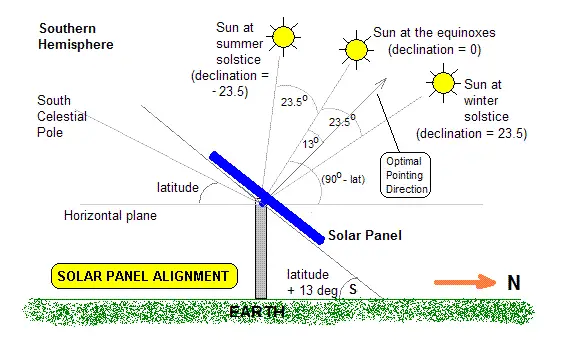
The “angle of incidence”—the angle at which the sun’s rays impact the panel surface—must be as narrow or as close to perpendicular as feasible for photovoltaics to generate power. As a result, the angle that gives your solar panels the most direct, perpendicular light is the ideal angle for them.
Why Must Solar Panels Be Mounted at a Specific Angle?
As you may expect, the solution is quite straightforward. Although it is not necessary, solar panels should be positioned with a tilt angle to provide for optimum sun exposure. The purpose of the solar system is to maximize the amount of sunlight that solar cells get in order to maximize the amount of power that they can produce.
It can be challenging to determine the ideal solar panel angle that would provide you with the most effective solar system constantly because the sun moves during the day and throughout the seasons. If it’s not possible to change it frequently throughout the year, you should only position it at the ideal angle for the relevant season. The sun is at its highest point in the summer and its lowest point in the winter.

An ideal angle for solar panels is thought to be in the region between these two extremes. Of course, it must coincide with the latitude of where the solar panels are situated. Experts claim that if you take all of that into account and tilt your solar system at that typical angle, you will get the optimum results.
Best solar panel angle and direction by zip code
Below we have mentioned the solar panel angle and direction of some cities in the United States, along with the zip code. Have a look at the table –
| CITY | STATE | TILT ANGLE | DIRECTION | ZIP CODES |
| Albuquerque | New Mexico | 35° | South | 87101–87199 |
| Austin | Texas | 30° | South | 73301–78799 |
| Boston | Massachusetts | 42° | South | 02108–021298 |
| Buffalo | New York | 43° | South | 14201–14280 |
| Charlotte | North Carolina | 35° | South | 28201–28299 |
| Denver | Colorado | 40° | South | 80201–80299 |
| Detroit | Michigan | 42° | South | 48201–48288 |
| Los Angeles | California | 34° | South | 90001–90099 |
| Miami | Florida | 26° | South | 33101–33299 |
| New York City | New York | 41° | South | 10001–10286 |
| Newark | New Jersey | 41° | South | 07101–07199 |
| Phoenix | Arizona | 33° | South | 85001–85098 |
| Portland | Oregon | 46° | South | 97201–97298 |
| Raleigh | North Carolina | 36° | South | 27601–27699 |
| Richmond | Virginia | 38° | South | 23173–23298 |
| San Diego | California | 33° | South | 92101–92199 |
| San Francisco | California | 38° | South | 94102–94188 |
| Tuscaloosa | Alabama | 33° | South | 35401–35490 |
| Washington | District of Columbia | 39° | South | 20001–20599 |
What factors influence the ideal solar panel angle?
The ideal angle of your solar panels will change depending on a variety of factors. The following factors should be taken into account when choosing the ideal tilt for your solar array –
Latitude
The majority of solar panels are set at an angle that maximizes the amount of sunlight reaching the area. For the majority of American property owners, between 30 degrees and 45 degrees is the ideal angle for placing solar panels on a roof that faces south. You may guarantee that you will get the highest annual average output from your solar power system by tilting your solar panels to the same angle as the latitude of your residence (pointing your panels at that average location).
Existing roof design
Every property is different, and there isn’t a universal chart for where to put solar panels. It would be ideal if everyone had a roof that was tilted exactly the same as their latitude. Since many roofs will have slopes between 30 and 40 degrees, solar panels can sit flush against the roof while still producing enough electricity to generate profitable returns.
Traditional racking solutions might not be able to position panels at the ideal tilt if you’re trying to put solar panels on a steep roof. The best you can do is lay your panels flat against the roof because the steep angle of your roof may already be greater than the ideal angle for production. When it comes to installing solar panels, low-angle roofs will also present challenges, and you might need specialized racking to tilt the panels at the right angle. Less electricity will be produced if panels are installed flush against these kinds of roofs, which will eventually result in lower solar savings.

Solar contractors would typically choose to use racking solutions that mount your panels up at an ideal angle in the event of a flat roof. The size of your system may be constrained even though this enables your panels to face the light more directly. If you don’t space and stagger the rows of panels out on the roof, tilting panels up will result in the panels shadowing one another. Because of this, you are unable to install as many panels as you can if the solar panels are flat with the surface.
To ensure optimal production and ideal safety, it is always advisable to have a professional solar installer mount the panels on your roof, regardless of how steep or flat your roof is. Additionally, read this article to see if solar energy is a suitable fit for your home and roof type if you’re unsure how solar panels might benefit you.
Time of the Year
Solar panels perform well in the winter; however, during exceptionally harsh winters, you will normally notice a drop in overall energy production as a result of snow covering your panels and lowering their power output. Installing solar panels at a steeper angle than your latitude—ideally, somewhere around 60 degrees—can help offset production dips during the winter in the northern hemisphere since the sun is low with respect to the horizon.
By doing this, you are positioning your panels so that they will operate more effectively in the winter, as the sun will be shining more directly on them from a lower point in the sky. Additionally, mounting panels at a lower angle can be detrimental because snow won’t be able to readily fall off of your array. As a result, there will be persistent snow cover and less electricity generated.

Changing the angle of your solar panels twice a year in the spring and fall is another technique to lessen seasonal variance in production. In fact, a system at a latitude of 40 degrees can see a notable energy boost of roughly 4%. If you’re wondering when to tilt your solar panels, we suggest tilting them to the winter angle around September 15 and then tilting them to the spring and summer angles about March 15.
Which is more important, the direction or angle of the solar panel?
Although the angle of your solar panel’s matters, the direction they face is the most crucial element in how much electricity they produce. As previously said, the sun is always in the southern half of the sky in the northern hemisphere; hence for the best results, solar panels should be facing south (assuming you live in the northern hemisphere).
Even if it results in the best tilt, installing solar panels in a less-than-ideal direction is a bad choice. In Boston, for instance, a solar array-oriented 30 degrees south will nevertheless generate more electricity than one oriented 42 degrees north.
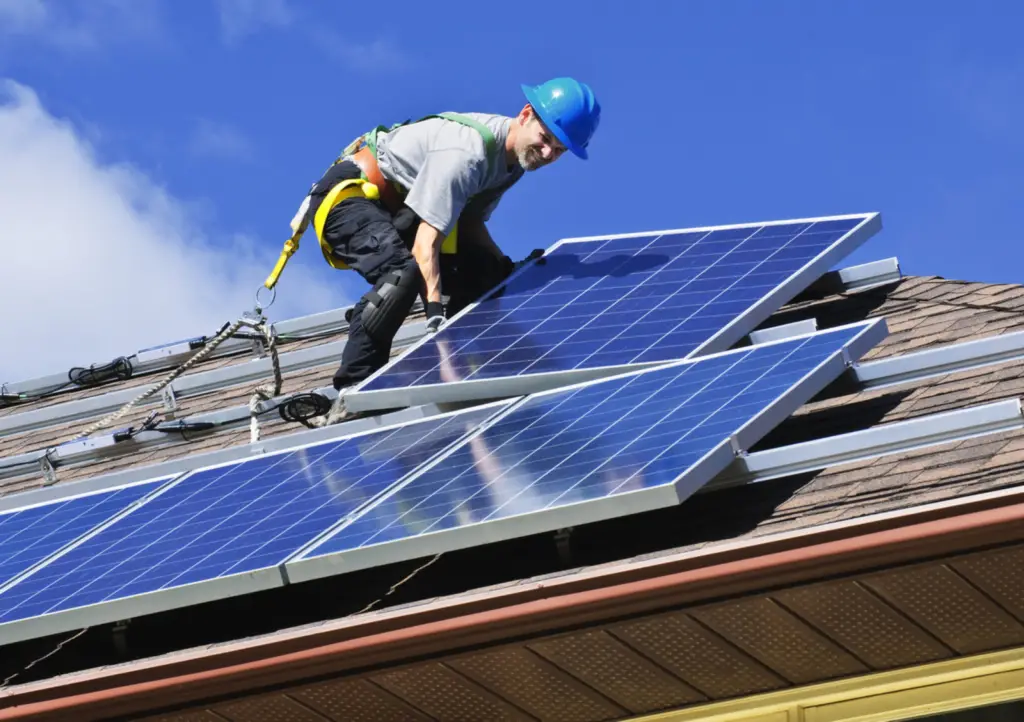
Conclusion
There is no denying that installing solar panels was the right choice. You will be improving your energy output by making this decision, and you’ll also save lots of money on your electricity costs. Now you only need to make sure you get the most out of your investment, which entails modifying the system in a way that will give you the most energy production possible.
We wanted to make sure you knew that a key component of that process is the tilt angle of solar panels. All you need to do is determine the ideal panel angle based on your zip code or just calculate it using one of the two ways we discussed in the paragraph above.

